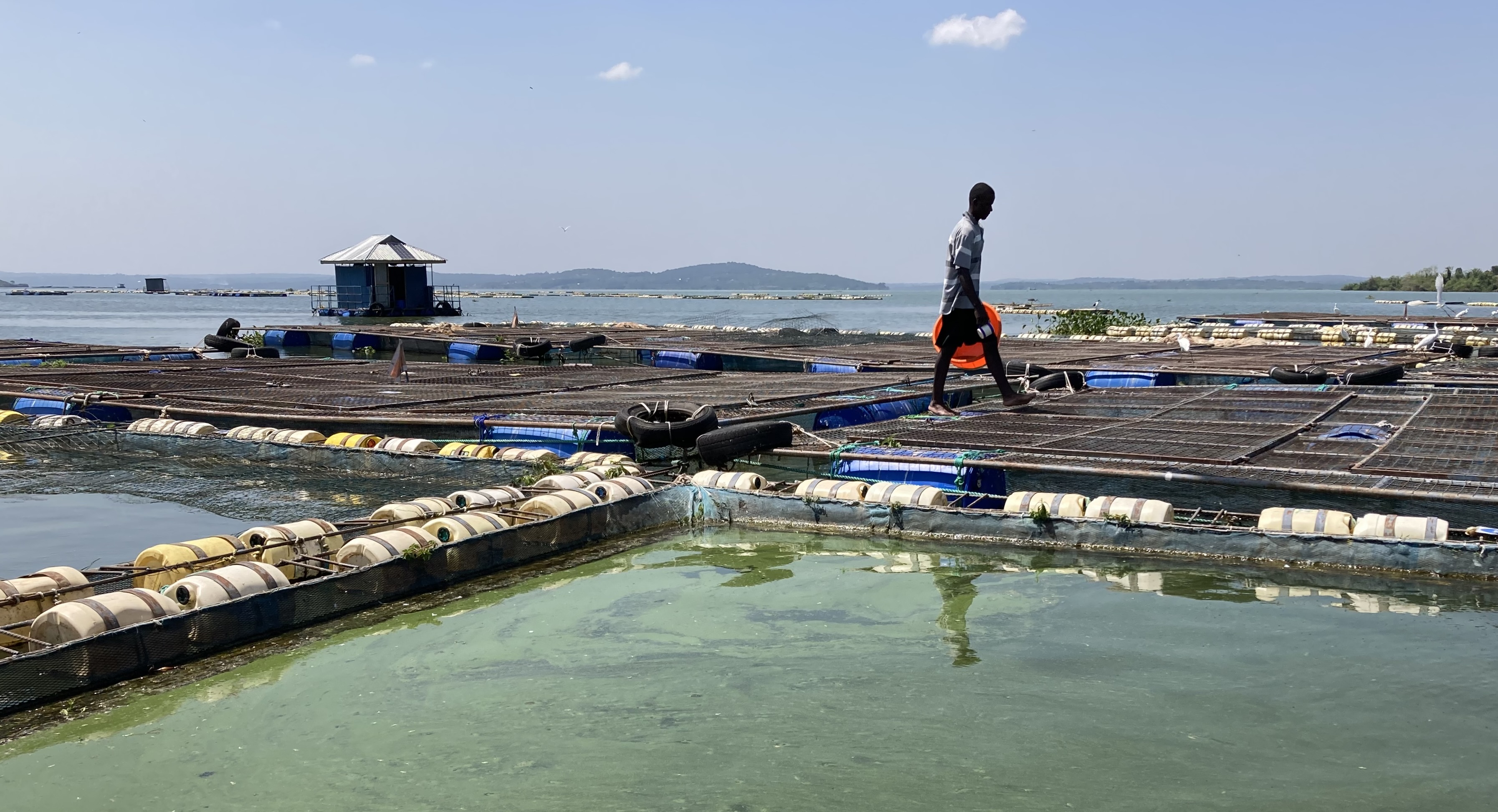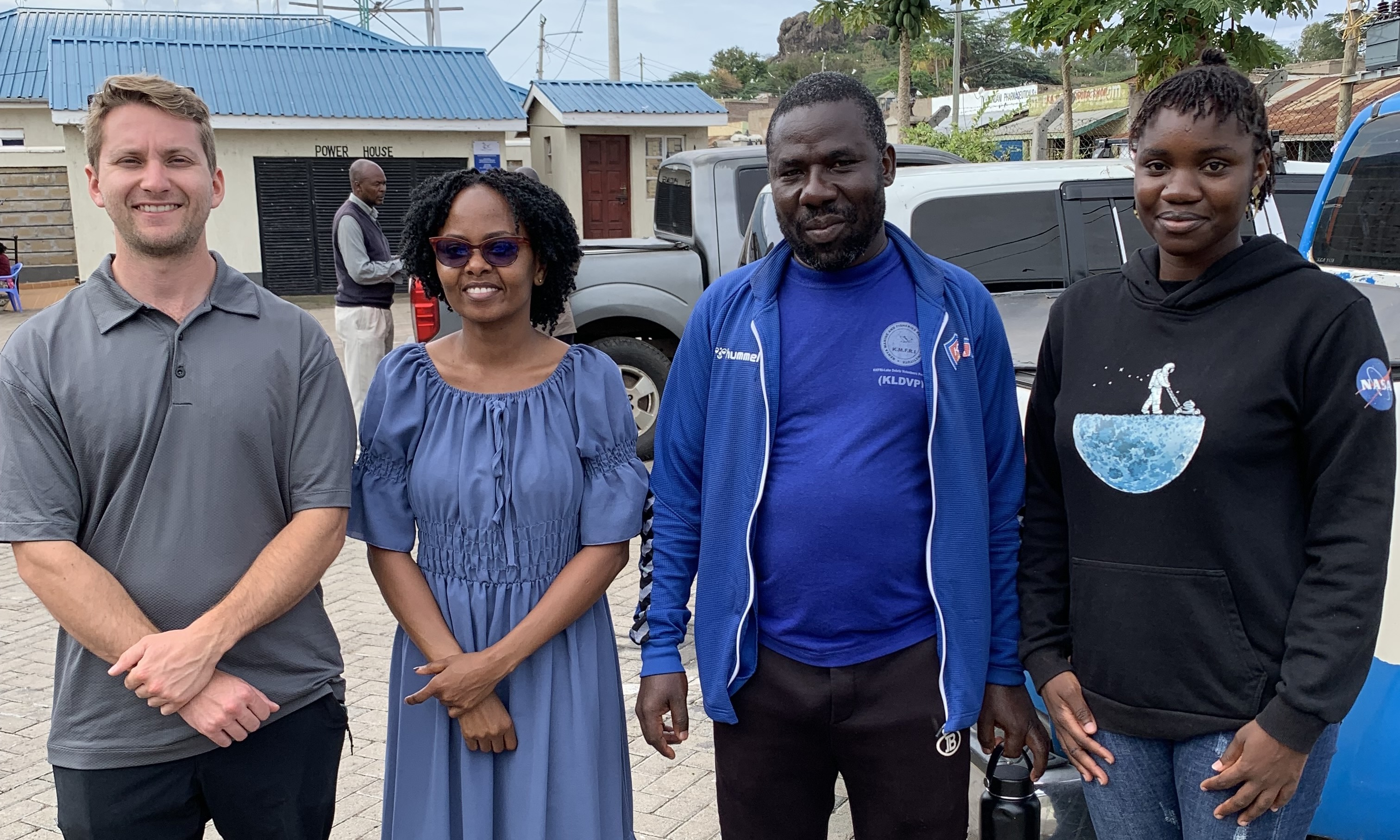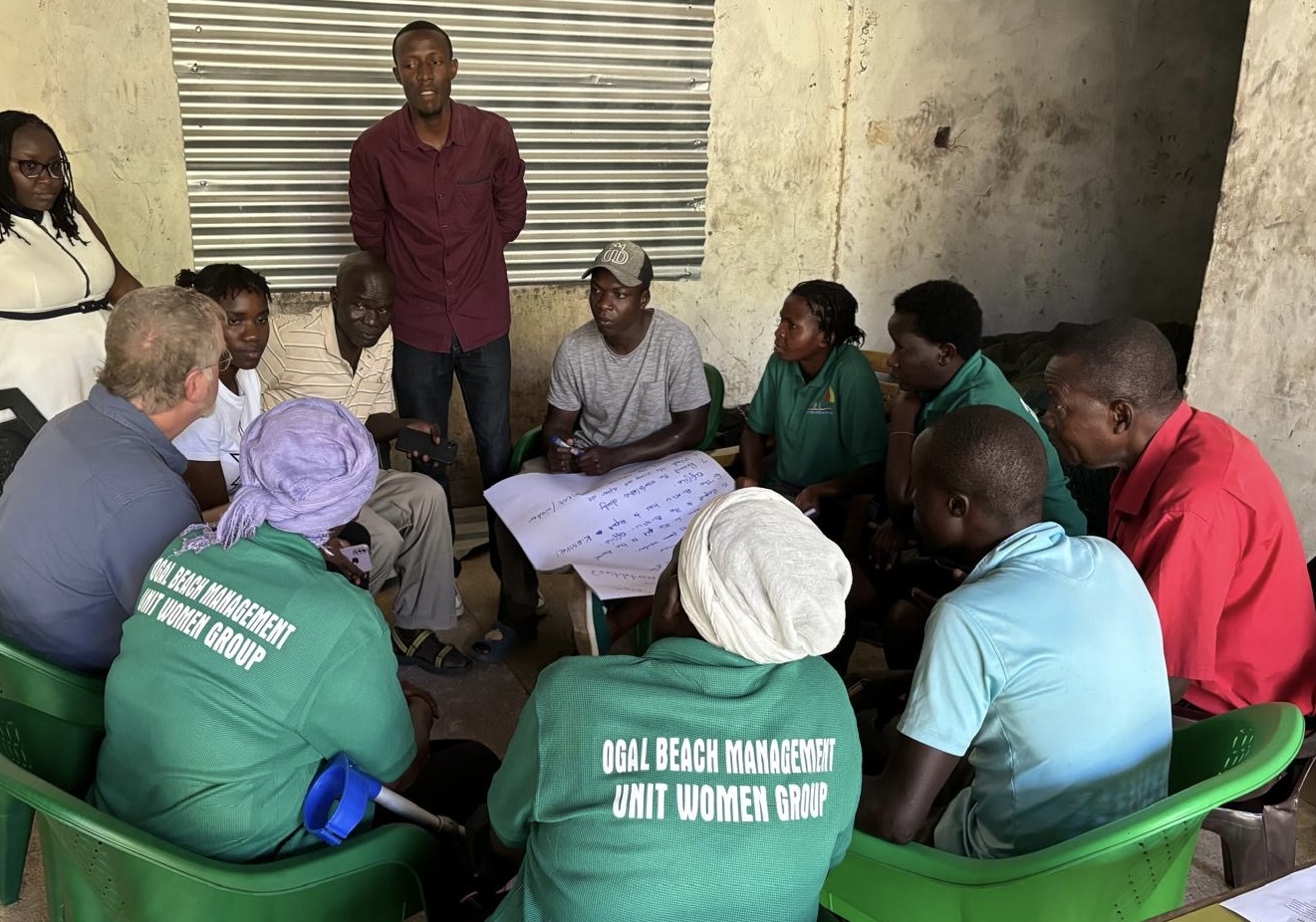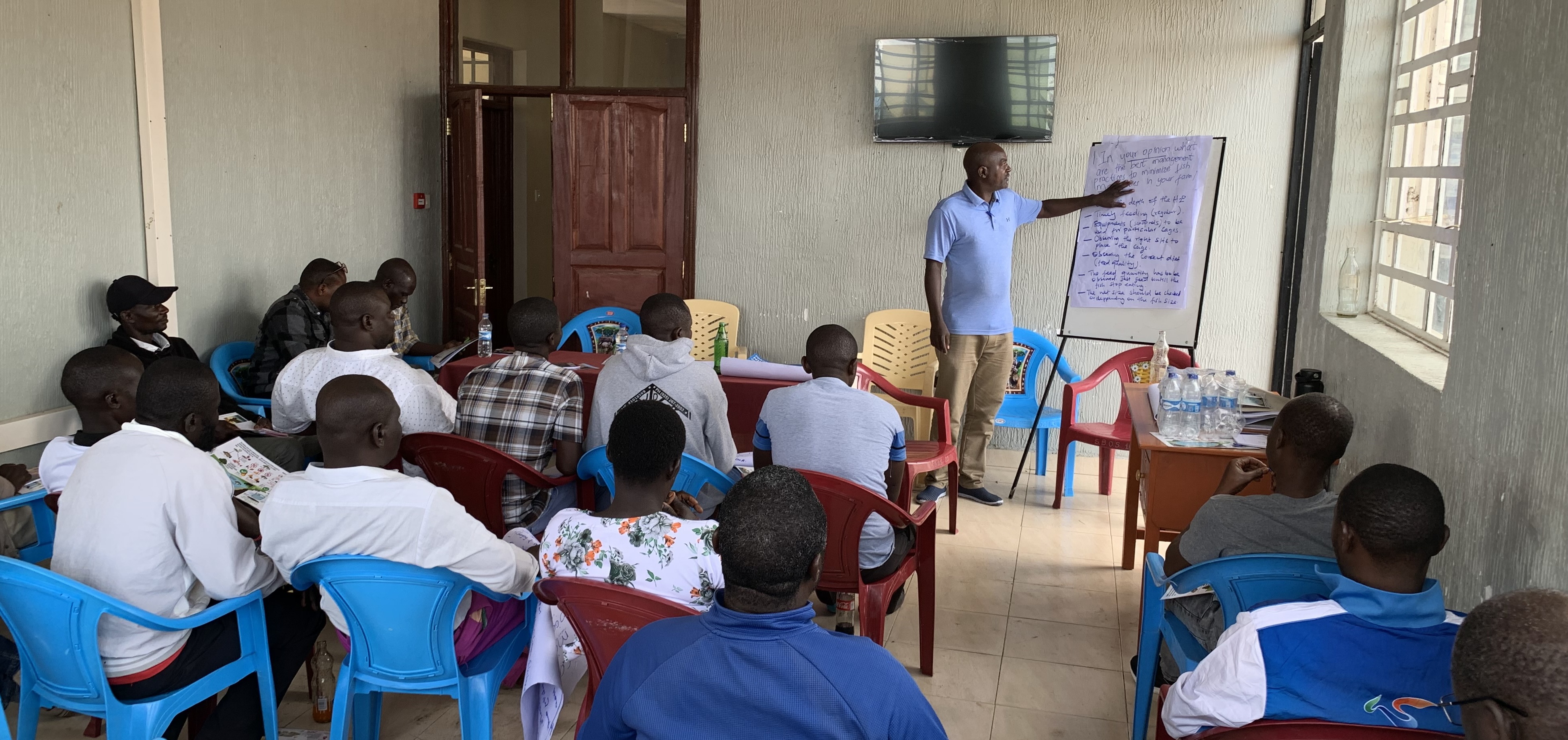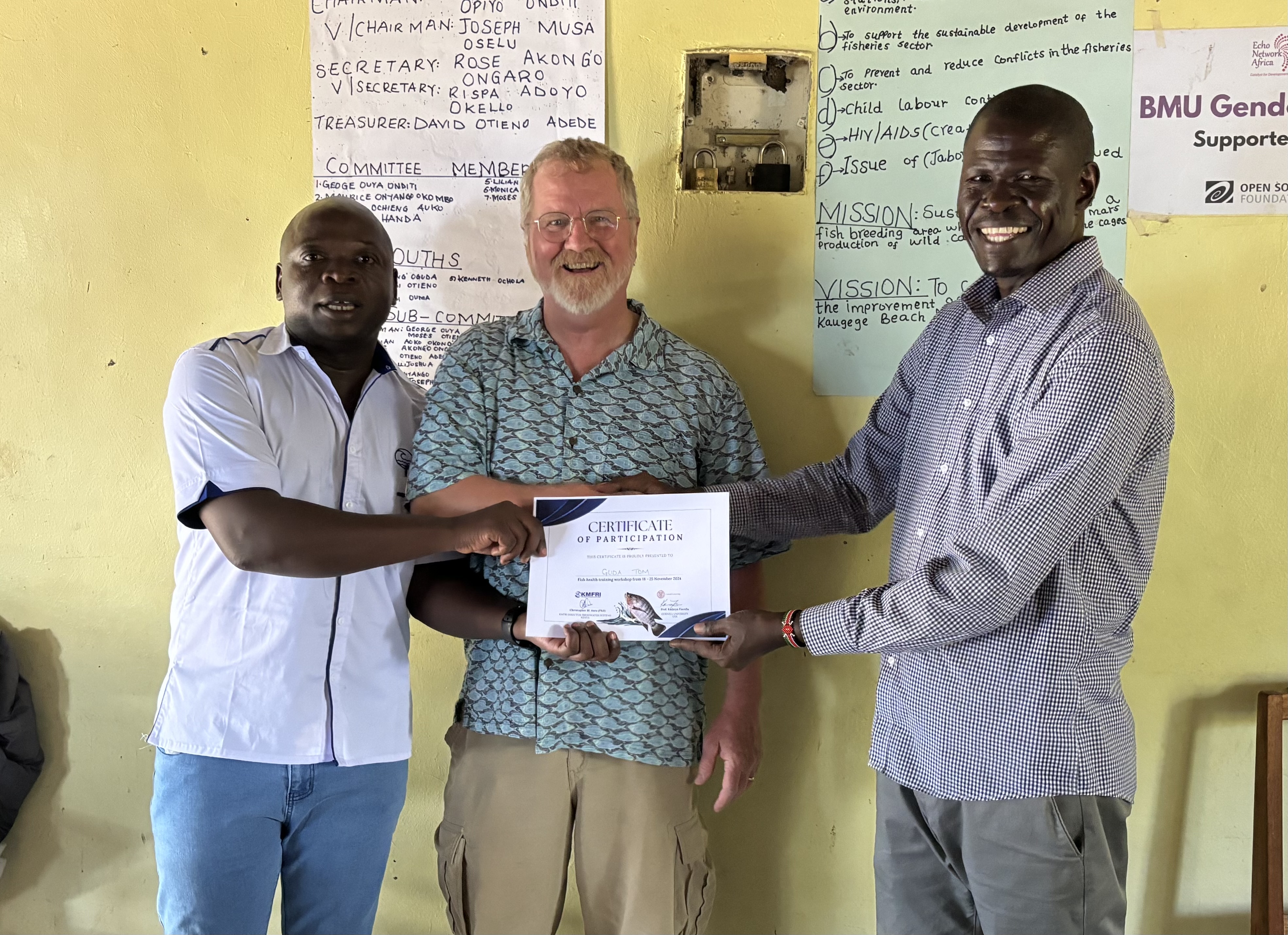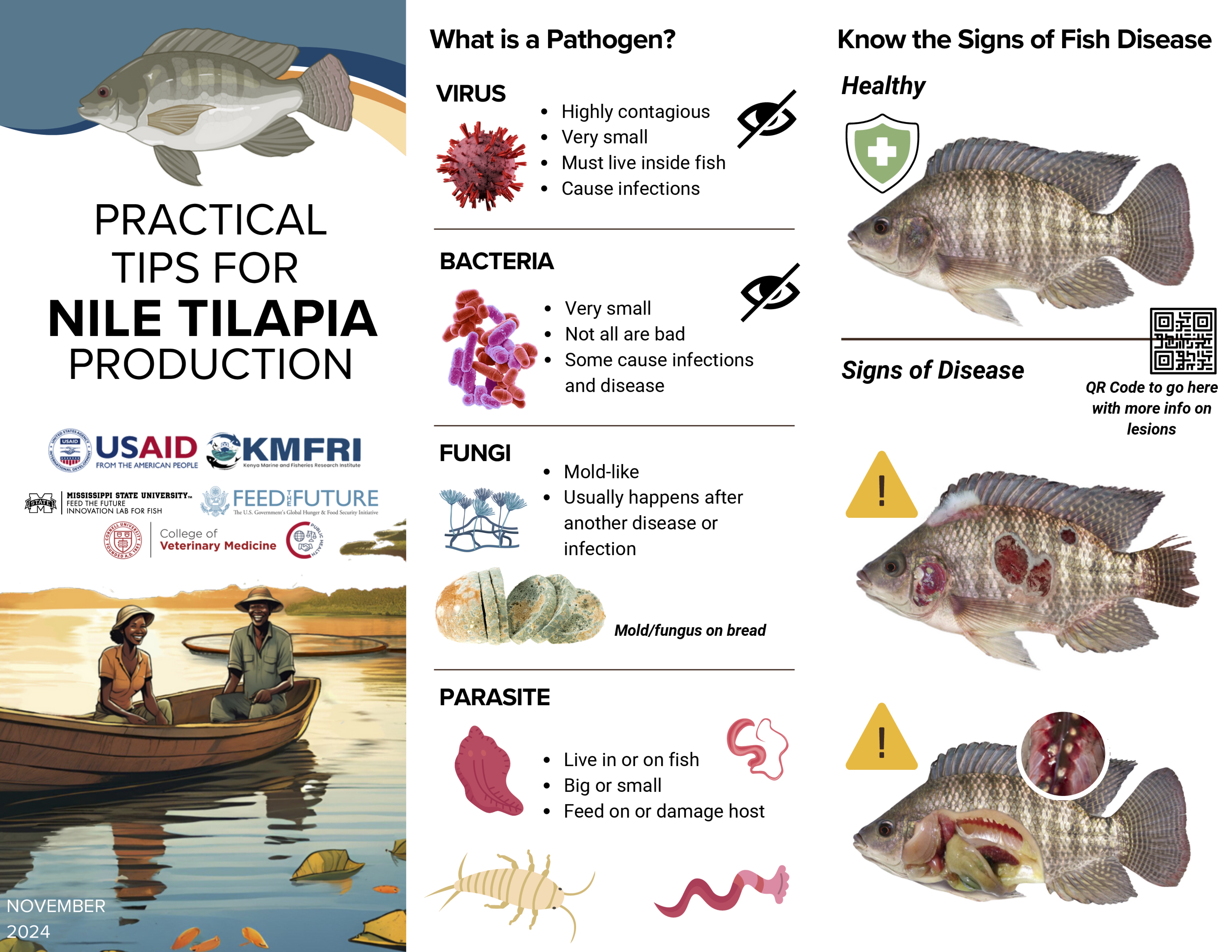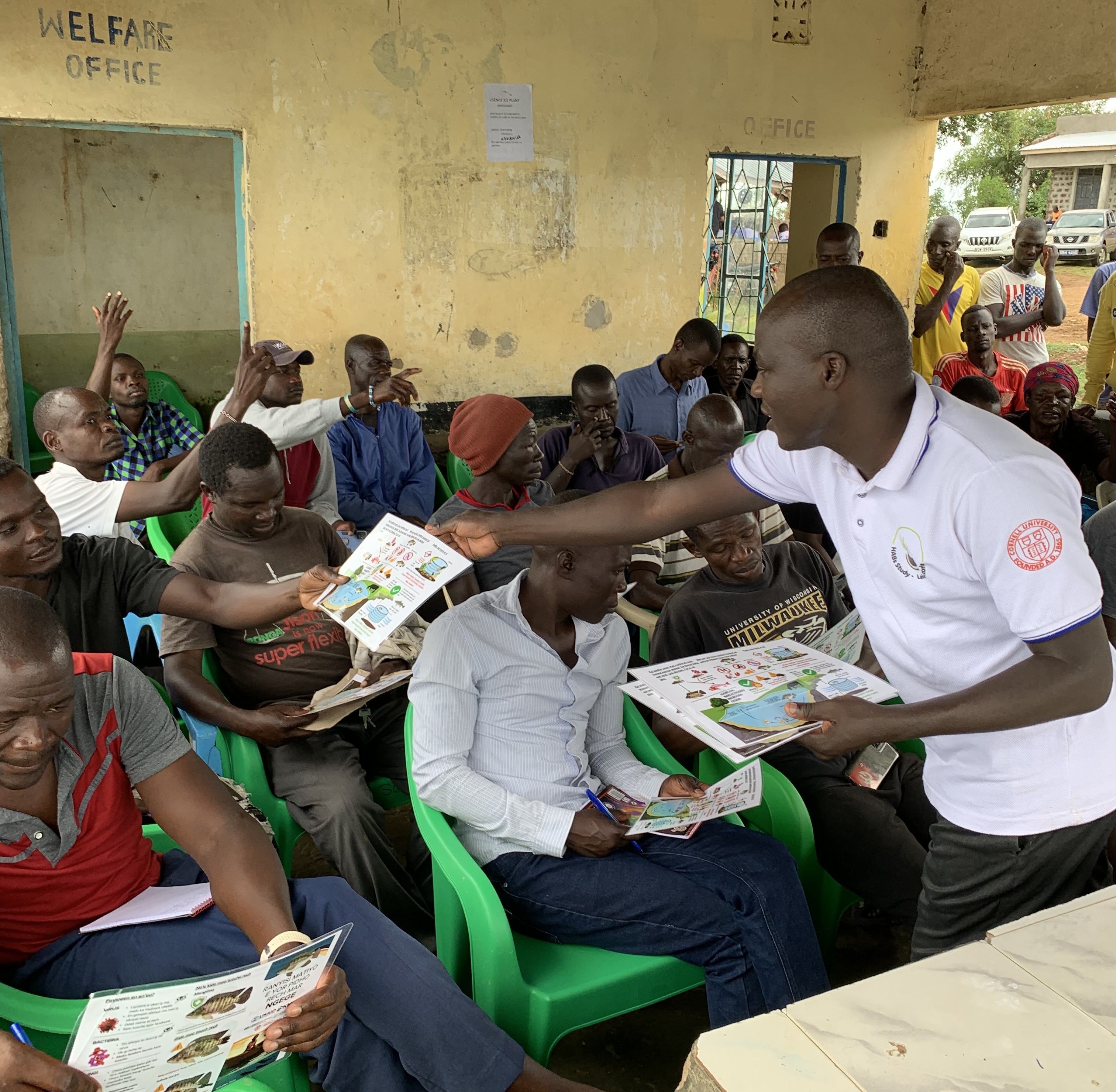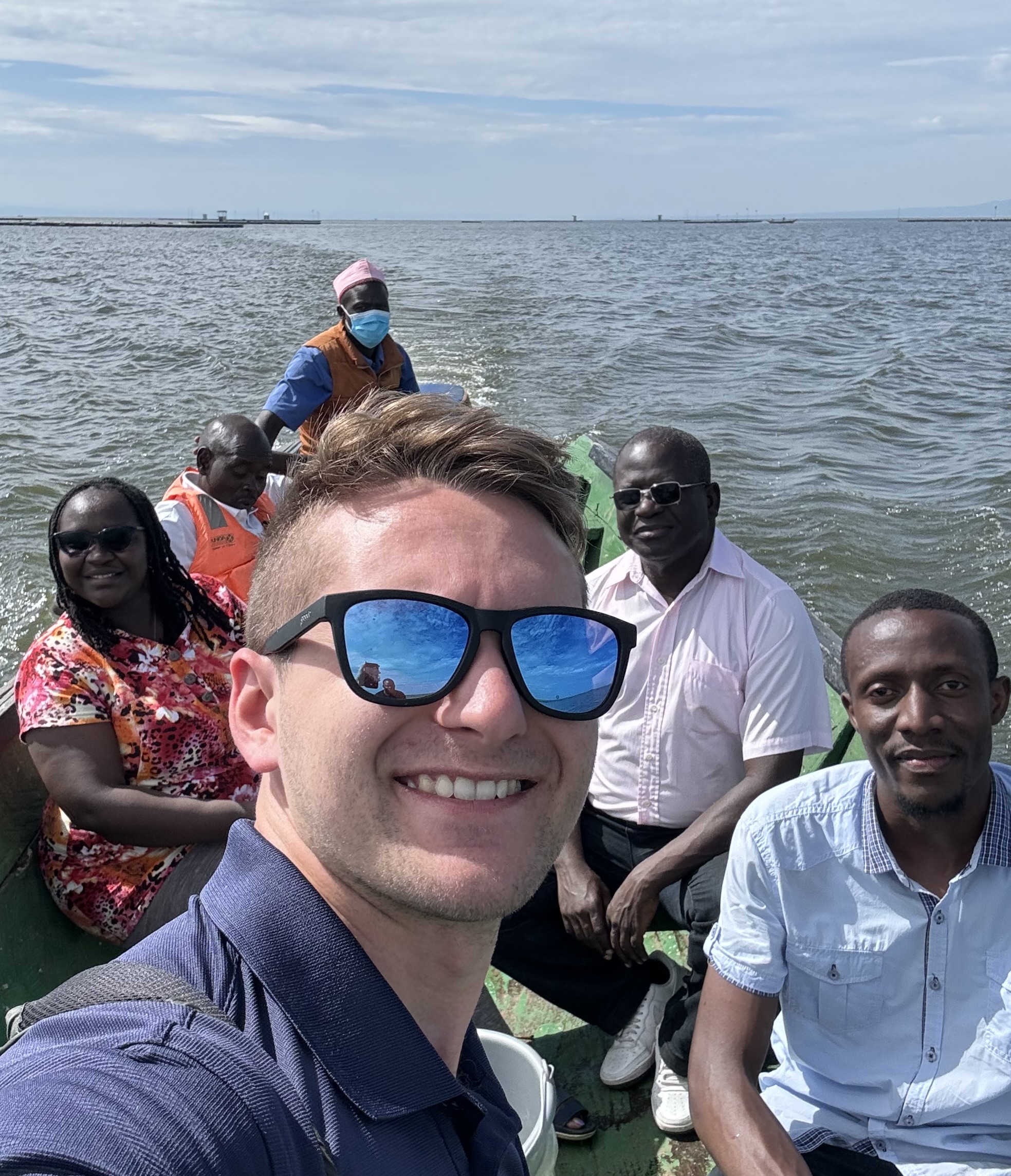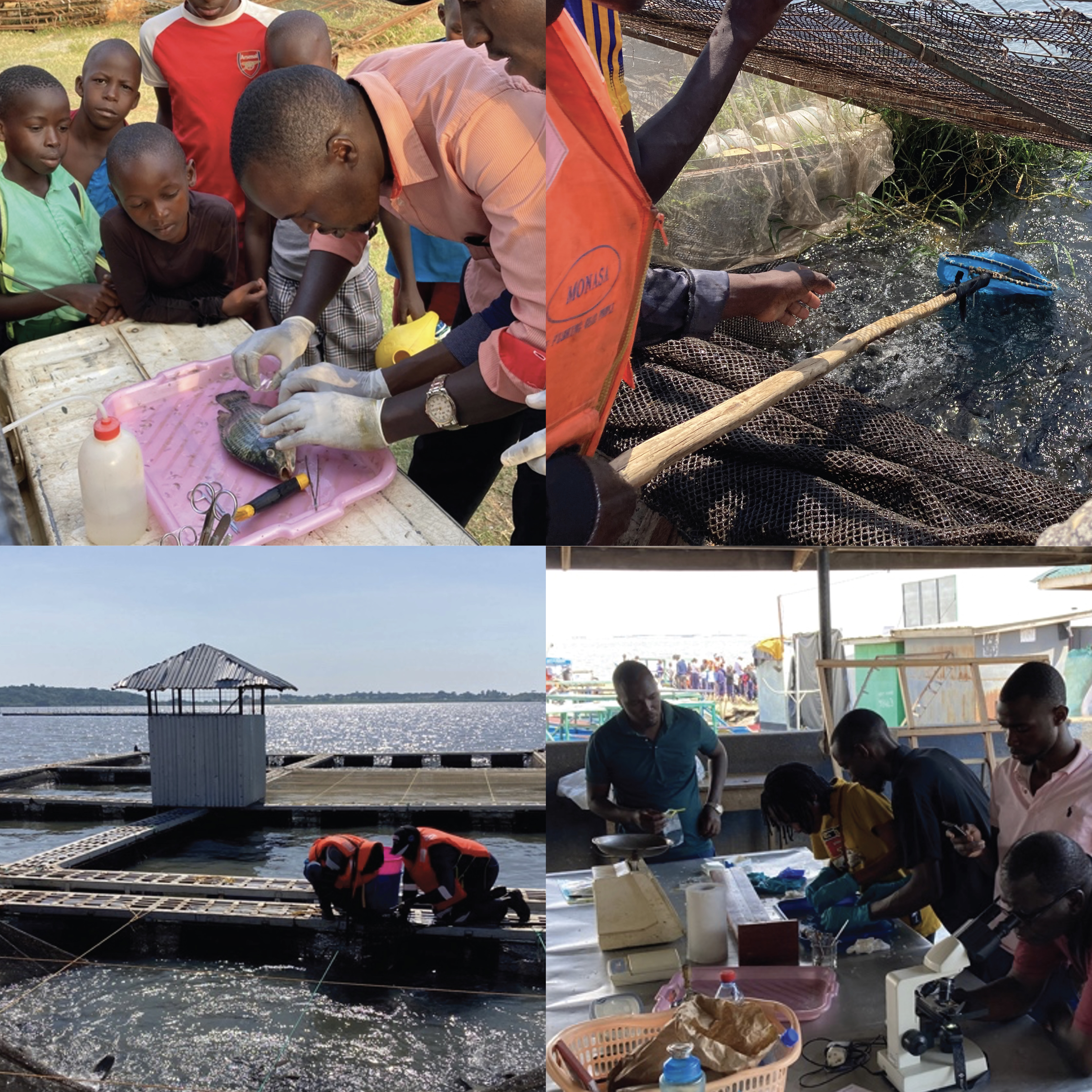Training Cage Farmers on the Shores of Lake Victoria
My colleagues at the Cornell University College of Veterinary Medicine (CVM), Dr. Kathryn Fiorella and her PhD student, veterinarian Eric Teplitz, have been working to examine interactions among environmental change, livelihoods, food systems, and nutritional security. They focus on fisheries and the households that rely on the environment to access food and income. In Lake Victoria, Kenya, they maintain a close connection with both Kenyan fish farmers and scientists at the Kenya Marine and Fisheries Research Institute (KMFRI). In November 2024, I traveled with them to assist with training fish farmers on the shores of Lake Victoria in Kisumu, Kenya.
Our partners at KMFRI dedicate their efforts to learning what Kenyan fish farmers need in order to be successful. Our trip, focusing on fish health issues, is the kind of face-to-face opportunity I genuinely enjoy.
Before we interacted with the fish cage farmers, we spent a day with Kenyan fisheries colleagues providing training on how to respond to mortality events and discussing the causes of tilapia diseases (tilapia, Oreochromis niloticus, are a commonly farmed fish species here). This training involved not only KMFRI staff but also professionals from the Kenya State Department, the Directorate of Veterinary Services, and the Kenya Fishery Service, who also manage wild fisheries. Fielding questions from knowledgeable authorities thirsty to understand the health problems that limit farmers’ livelihoods was quite rewarding.
The next day, we arrived at Ogal Beach and found the room full of cage farmers, including women wearing their organization’s green polo shirts. Soon, we were introducing ourselves and setting the plan for the morning. Breaking into groups, we tackled challenging questions about biosecurity, disease response, and causes of mortalities. Tilapia farmers took the first crack at the questions listed below:
- In your opinion, what are the best management practices to minimize fish mortalities in your farms/cages?
- How can you respond to fish deaths?
- What do you think are the reasons for the fish deaths?
The leaders of each group reported back to the attendees, and then an extensive question-and-answer session followed. My Cornell colleagues found the questions carefully considered, and the answers were much appreciated by the crowd.
KMFRI staff, led by Dr. Christopher Aura, director of freshwater systems, delivered a strong message that “everyone can learn from each other.” The enthusiastic remarks provided by farmers after each workshop made the long trips worthwhile.
Educating with New Fish Health Pamphlets
After explaining his tilapia disease surveillance project that extends across five Lake Victoria counties, Dr. Teplitz reviewed a new pamphlet summarizing the results. The graphical outline provided to the farmers in three different languages was designed by one of our Cornell DVM/PhD students, Grace Gonzalez.
Our colleagues at KMFRI translated and printed the laminated pamphlets to create a practical, user-friendly document for the small-scale cage farmers on the nearshore waters of Lake Victoria. This brief overview of basic best practices helps farmers focus on adjusting their procedures, with the reasons for the recommended changes clearly explained.
Fish health precautions discussed in the session included farmers’ responses to fish disease losses, water quality, and large-scale fish die-offs. Many fish farmers report consuming some dead fish, feeding them to other animals, or throwing them in the lake. Only 23% of farmers contact an individual or organization when they notice sick or dead fish, and there are currently no centralized systems for disease reporting.
Standardized biosecurity practices are absent at many Kenyan fish farms, with 90% of cage farmers interviewed reporting that they do not disinfect the long-handled scoop nets when moving between different cages. Owners often stock with fingerlings from different sources and will add more fish to cages after partial harvests. Best practices for production procedures described in the pamphlet included fingerling management, feeding practices, netting adjustments and cleaning, cage dimensions, cage location, depth of water under the net, stocking density, and harvest timing. Encouraging the disinfection of scoop nets and other equipment is another message we provided to the cage farmers. Other well-received messages were about the disease risks of stocking fingerlings from different sources, and the risks of adding additional fish after partial harvests.
Surveying Fish Health Across Counties
To identify possible opportunistic bacterial pathogens in Kenya’s Lake Victoria cage aquaculture systems, Eric is conducting a comprehensive disease surveillance study. Moving forward, we are collaborating with Ekta Patel, a scientist at the International Livestock Research Institute (ILRI) near Nairobi. Ekta’s colleague, Linnet, will be training us on how to prepare and analyze bacterial samples isolated during the survey to identify each species of bacteria.
Eric has already sampled tilapia from 20 cage farms, randomly selected from each county. With help from KMFRI interns Meshack, Previn, and Jackline, bacterial isolates have been prepared for testing by the ILRI team. Additionally, Eric and the KMFRI team collected kidney bacterial swabs during the training workshop necropsies at Beach Management Units in five different counties.
Moving forward, pond operations (another shore-based approach to aquaculture here) will also be randomly selected from four additional counties. Our KMFRI colleagues will sample the fish from these ponds and will be prepared to respond and investigate when any fish kills are reported at these aquaculture sites.
Our work in Kenya is supported by the Fish Innovation Lab at Mississippi State University. Other partners include Blue Aquaculture Consulting, Pwani University, the University of Rhode Island, Texas State University, Washington University in St. Louis, and WorldFish. The Fish Innovation Lab supports the United States Agency for International Development’s agricultural research and capacity capacity-building work under Feed the Future, the U.S. Government’s global hunger and food security initiative. Mississippi State University is the Fish Innovation Lab’s management entity.
Dr. Rod Getchell works in the Aquatic Animal Health Program at the Cornell University College of Veterinary Medicine. Rod has a broad background in fish health with specific training and expertise in conducting therapeutic trials with a variety of fish species. His current research focuses on emerging pathogens of fish, including rhabdoviruses.
Photos provided by Dr. Rod Getchell. Text adapted from and images originally published in Fish Farming News: Issue 1, 2025.

